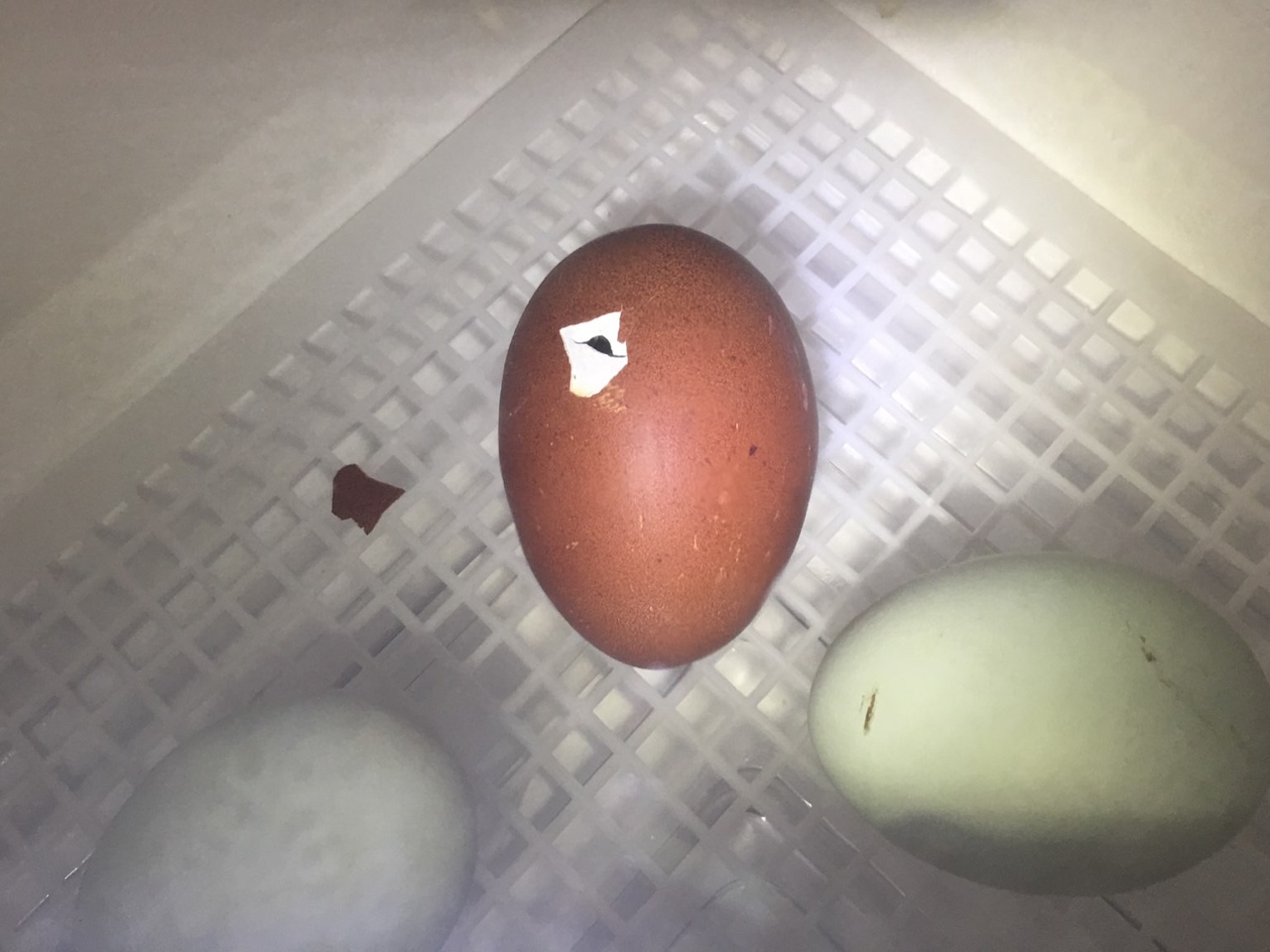
It’s hatching time! We have several incubators here on the farm and we like to keep them busy – we typically hatch eggs during spring, summer, and fall, so we’re starting a little earlier this year. We have Crested Cream Legbar (shipped eggs) and French Black Copper Marans (our own stock) eggs in the incubator and they should be hatching in the next couple of days. This point in the incubation process is called lockdown.
What’s lockdown? In the last few days of incubation, the chicks inside the eggs are readying for hatch and positioning themselves in the egg. The incubator’s turner is stopped (or you stop hand-turning). Humidity is raised to make hatching easier, and to maintain optimal hatching conditions, the incubator should be disturbed as little as possible…hence “lockdown”.
So why did we choose to add the Cream Legbars to our flock? Several reasons: Cream Legbars lay a blue egg, which will be a nice addition to our egg color spectrum. In addition, we’ll be able to cross them with our Black Copper Marans to produce Olive Eggers (which lay eggs in various shades of green, including olive). Finally, Cream Legbars are auto-sexing, so you can determine their sex as soon as they hatch via their coloring.
We’re also eagerly anticipating hatching more Black Copper Marans to build our breeding flock and to introduce new bloodlines; the new bloodlines are from a beautiful rooster, Noah, and a lovely pullet, Fiona, that we hatched last year from shipped eggs. Fiona recently began laying and she appears to have really great color in her eggs, in addition to a winning personality – she and Noah are by far the friendliest chickens we have on the farm. This is a characteristic we hope is passed on to their progeny. Melanie, our other hen, lays a nice, dark egg, and will contribute those genes to the new stock.
Until a few months ago, we had another adult Black Copper Marans hen, but she was killed by a hawk before we moved the group into a breeding tractor. The group is still on pasture, as the tractor is moved frequently, but they’re now safe from aerial attack. Unfortunately, this is the kind of frustrating setback that occurs when free ranging: it generally takes at least 5 months (with Marans, closer to 7 months) from hatch for a hen to begin laying, and the first month, at least, will be undersized eggs (called pullet eggs), so you can see how much lead time it takes to get full-sized eggs from new hens or to create Olive Eggers. With planning, luck, and patience, though, we may see our first olive eggs next year.
The hatching process is exciting and nerve-wracking – check back for updates on how the hatch goes and photos of cottonballs on legs!
